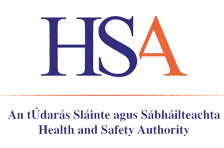Risk Assessments Made Easy
What is a Risk Assessment?
A Risk Assessment is simply looking closely at what could harm your employees and visitors in your workplace.
Visitors might include:
- customers,
- suppliers, and
- sales representatives.
Then, you identify control measures you can put in place to reduce the risk.
What are control measures?
Control measures are actions that can be taken to:
- reduce the exposure to a hazard,
- remove a hazard completely, or
- reduce the likelihood or the severity of the hazard causing harm.
An example of a control measure is placing guards around moving machinery parts to prevent people from coming into contact with them.
Further information can be found on our Hazard and Risk webpage.
Do my risk assessments need to be written down?
Yes, you must have your risk assessments written down or typed. You can print them off or keep them in a digital format, such as on a computer or in the cloud. Either way, your employees must be able to access them easily.
Do I have to do risk assessments in my workplace?
Yes, as an employer, you are legally required to carry out risk assessments at your workplace.
Do I need to update my risk assessments?
Yes, your risk assessments should be viewed as live documents, not something that is completed once, left on a shelf, and never revisited.
Your risk assessments should be reviewed at least annually or if there have been
- changes in the work activities being carried out,
- changes in equipment, technologies, or chemicals,
- changes in organisational structure such as downsizing or equally expanding,
- changes in legislation or standards, or
- reasons to believe that it is no longer adequate, such as after an incident (including a near-miss incident).
Where should I keep my risk assessment?
You should include your risk assessments with your safety statement.
How do I complete a risk assessment?
There are three basic steps to completing a risk assessment.
Step 1 – Look at the hazards in your workplace
Start by looking for and finding the “hazards” in your workplace. A hazard is simply anything that can cause harm to you, your employees, or other people.
Look around your workplace and the work you are doing and ask yourself, “Where can people get hurt?”
You are looking for situations where people can be harmed by hazards such as:
- unsuitable access,
- vehicles,
- machinery,
- manual handling,
- chemicals.
You should think about your employees and those who are not your employees.
There is no need to consider every minor hazard or risk we accept as part of our everyday lives. For example, you do not need to identify lifting a 1kg package as a workplace hazard, but lifting a 25kg box of 1kg packages would be a hazard.
Step 2 – Decide who might be harmed and how
Next, look at the level of risk and ask yourself, “What is the chance people will be harmed, and how serious could the injury be?”
You also need to think about who could be harmed, including vulnerable people such as
- young people,
- people new to the job,
- migrant workers,
- people with disabilities,
- older people,
- pregnant employees, and
- shift workers.
Some hazards will be high risk, such as working at height. Other hazards will be lower risk because the harm may be less severe.
Step 3 – Discuss with your employees and put control measures in place
Decide what you will do to make the task or activity safer for you, your employees, and others around you.
Discuss this plan with your employees. They may have ideas or considerations that you haven't thought of.
Your control measures are an important part of the risk assessment, as they set out the steps that must be followed to protect people. Some control measures may already be in place, and you will need to decide if additional measures are needed. Your risk assessments will help you prioritise the high-risk hazards first.
Your additional control measures should be recorded in an action plan.
Your action plan should include:
- who will put the new control measures in place,
- when the new controls should be completed by, and
- the date the new controls were completed.
|
Important Your risk assessments should be reviewed at least annually, or:
|
How can BeSMART.ie help me?
BeSMART.ie is a free online tool that guides you through the entire risk assessment process using clear, simple language and easy-to-follow instructions.
Once complete, you will have a workplace-specific safety statement that can be printed, downloaded and put in place.
Using BeSMART.ie is the easiest and most effective way to prepare your risk assessments and safety statement. It is available to a wide range of business types. If your business isn't covered, we have a ‘Custom Business Type’ function that allows you to select the risk assessments you need for your business.



